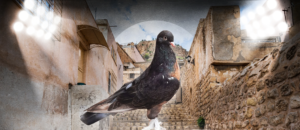As Hurricane Laura hurtled into the Gulf Coast last week with alarming speed, powerful winds and historic flooding, Lafayette, La., missed the worst of the devastation.
But as protests against the local police shooting of a Black man have resumed this week, officials say there’s another danger that could be headed their way: outside agitators, ready to wreak havoc at demonstrations.
Now, citing this “serious, local security threat,” Lafayette — a combined city and parish of 244,000, and one of the largest municipalities near Laura’s path — has barred charity groups from sheltering hurricane evacuees fleeing Louisiana’s battered coast.
“We are not in a position to safeguard people displaced by Laura,” Cydra Wingerter, Lafayette’s chief administrative officer, wrote in an email to area humanitarian groups Saturday, according to the Acadiana Advocate. “We know that bad actors will take our hospitality and use it against us.”
Louisiana suffered ‘tremendous devastation’ at height of Hurricane Laura’s power
Claims from local officials about these mysterious outsiders, swooping in from out of town to stir up trouble, go back decades and have been criticized elsewhere this year as a ploy to dismiss racial justice campaigns. But as The Washington Post’s Isaac Stanley-Becker has reported, individuals from both the far right and far left have indeed ramped up the violence this summer as crowds rally against the all-too-familiar occurrence of police shooting a Black person.
Since May, there has been no shortage of gruesome incidents of police violence to protest, many of them captured on camera: in Minneapolis and Louisville, then Atlanta, and more recently in Kenosha, Wis.
Earlier this month, another incident unfolded in Lafayette, in the heart of Louisiana’s Cajun country.
On the night of Aug. 21, six police officers arrived at a Circle K gas station in response to “a disturbance involving a person armed with a knife,” the Lafayette Daily Advertiser reported.
In the parking lot, they found Trayford Pellerin, a 31-year-old Black man, and tried to apprehend him. But Pellerin kept walking away with a knife, a bystander told the newspaper. Officers trailed him for about half a mile before they used a Taser and then shot him 11 times.
Pellerin died in the hospital, and all six officers were placed on leave amid an investigation by state authorities. It was not long before a viral video of the scene — condemned by the Louisiana ACLU as a “horrific and deadly incident of police violence against a Black person” — unleashed massive unrest.
People descended to a Confederate monument downtown to carry signs and block traffic. At another demonstration, some people lit a highway median on fire and police set off smoke canisters, the Associated Press reported. There was a silent sit-in outside city hall, and a cookout on Mayor-President Josh Guillory’s front steps.
Over the course of about a week of demonstrations, police arrested dozens of people, most of them from Lafayette or nearby cities, the Advocate reported. But elected officials repeatedly insisted outside figures were influencing protests.
The most popular and interesting stories of the day to keep you in the know. In your inbox, every day.
“They’re not our community. They’re not our people,” Scott Morgan, the interim police chief, said at a news conference Saturday. “They’re coming over here for trouble. Don’t support them, don’t get involved with them. Stay out of it.”
In the midst of all the controversy was a rapidly intensifying hurricane that became the strongest storm to hit the Gulf Coast in decades and prompted evacuation orders for over half a million people. When Laura made landfall early Thursday, Lafayette was largely spared from the damage. But farther south and to the west, the Category 4 storm killed at least 16 people, overturned trailers and flattened entire towns.
More than 80 water systems in Louisiana failed in the wake of the devastation, forcing nursing homes and hospitals that can typically rely on generators to evacuate their residents and patients. As of Saturday morning, more than 400,000 did not have power and about 200,000 lacked water, officials said.
Normally, those residents could travel to Lafayette to rely on government officials, churches and other local humanitarian groups. But not this time, said Wingerter, the Lafayette government official.
Writing to the heads of a group that coordinates relief efforts, she wrote in a Saturday email: “This is a serious threat and we must handle this issue before we can care for our neighbors,” according to the Advocate.
“It goes against what we believe and how we usually respond after a disaster,” Wingerter added, “but it would be irresponsible to potentially put others in harms way.”
Jamie Angelle, a spokesperson for the city-parish government, told reporters on Sunday that local pastors who oversee shelters at their churches had shared worries about “the threat of outside entities.”
While protests this past weekend were “lawful and peaceful,” he added, the possibility of violence — like a shooting that injured two people at one early demonstration — was enough to justify their decision.
“Just given everything that’s circulating … our fear is that something will happen,” he said.
As for the thousands of residents from Lake Charles or smaller, wrecked coastal towns who are dealing with destroyed homes or sustained power outages? Angelle insisted they will still be able to find shelter — just not in Lafayette.
While hotels in the parish were fully booked, he told the Advocate, efforts spearheaded by Louisiana state officials would ensure they will be taken care of.
“Will they have to maybe go a little farther?” he said. “Unfortunately, that’s probably the case.”




